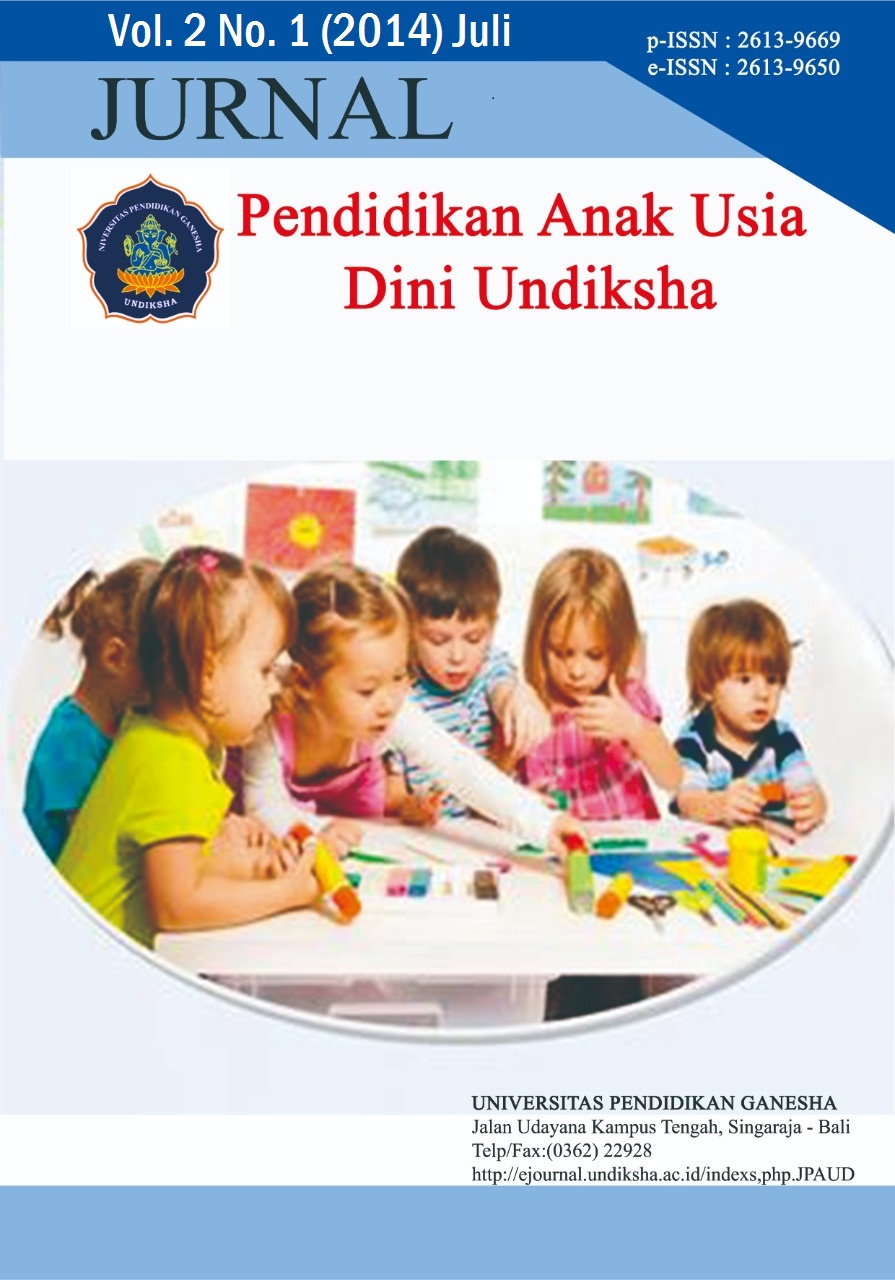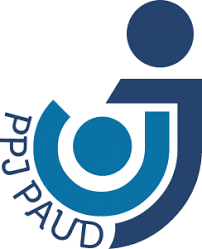PENERAPAN MODEL PEMBELAJARAN KOOPERATIF TIPE STAD BERBANTUAN MEDIA BALOK UNTUK MENINGKATKAN KEMAMPUAN SOSIAL ANAK
DOI:
https://doi.org/10.23887/paud.v2i1.3254Abstrak
Permasalahan yang dialami oleh anak di TK Kumara Satya Dharma Singaraja, yaitu kemampuan sosial anak masih rendahdanguru lebih cenderung mendominasi saat melakukan kegiatan pembelajaran (teacher center). Penelitian ini dilaksanakan untuk meningkatkan kemampuan sosial anak dengan menerapkan model pembelajaran kooperatif tipe Students Team Achievement Division (STAD) menggunakan media balok. Subjek penelitian ini berjumlah 15 anak. Jenis penelitian ini adalah penelitian tindakan kelas yang dilaksanakan dalam dua siklus. Data penelitian tentang peningkatan kemampuan sosial dikumpulkan dengan metode observasi dengan instrumen berupa lembar format observasi. Data dianalisis dengan menggunakan metode analisis statistik deskriptif kuantitatif. Berdasarkan hasil analisis data yang dilakukan pada siklus I dapat disimpulkan bahwa kemampuan sosial anak di TK Kumara Satya Dharma Singaraja sebesar 58,9% yang berada pada kategori rendah. Hasil analisis data pada siklus II menunjukkan bahwa terjadi peningkatan kemampuan sosial anak dengan melalui penerapan model pembelajaran kooperatif tipe Students Team Achievement Division (STAD) berbantuan media balok sebesar 83,7% yang tergolong pada kategori tinggi. Melalui penerapan model pembelajaran kooperatif tipe STAD (Studens Team Achievemen Division) berbantuan media balok untuk meningkatkan kemampuan sosial anak pada kelompok B1 di TK Kumara Satya Dharma Singaraja, dari siklus I ke siklus II terjadi peningkatan sebesar 24,8%.Kata Kunci : Model Pembelajaran KooperatifTipe STAD, Balok, Kemampuan Sosial
Problems experienced that has been experienced by children in TK Kumara Satya Dharma Singaraja is the social ability still low and the teacher intently more dominate when doing learning activities (teacher center). This research carried out for improve the children social ability with implementing cooperative learning model type STAD which is using beams. The subject of 15 children. The type of this research is a act research that doing in two cycles. The research data about in observasing social ability were collected with observation method by using instrument a observation sheet format. The data analized by using analysis statistic descriptive quantitative method. Based on the result data analysis that performed in cycle I it’s can concluded that social ability of children in TK Kumara Satya Dharma Singaraja about 58,9% which in position of low category. The result data analysis that performed in cycle II showed that an increase the social ability of children by implementation of cooperative learning model type STAD using beams about 83,7%which belong of high category. By using cooperative learning model type STAD by assisted using beams for increasing social ability of children at B1 group of TK Kumara Satya Dharma Singaraja, from cycle I to cycle II showing increase about 24,8%.
keyword : Cooperative Learning Type STAD, Beams, Social Ability
Diterbitkan
2014-07-08
Cara Mengutip
., P. Y. A. ., ., I. K. S. M., & ., N. M. A. S. (2014). PENERAPAN MODEL PEMBELAJARAN KOOPERATIF TIPE STAD BERBANTUAN MEDIA BALOK UNTUK MENINGKATKAN KEMAMPUAN SOSIAL ANAK . Jurnal Pendidikan Anak Usia Dini Undiksha, 2(1). https://doi.org/10.23887/paud.v2i1.3254
Terbitan
Bagian
Articles
Lisensi
Authors who publish with the Jurnal Pendidikan Anak Usia Dini Undiksha agree to the following terms:
- Authors retain copyright and grant the journal the right of first publication with the work simultaneously licensed under a Creative Commons Attribution License (CC BY-SA 4.0) that allows others to share the work with an acknowledgment of the work's authorship and initial publication in this journal.
- Authors are able to enter into separate, additional contractual arrangements for the non-exclusive distribution of the journal's published version of the work (e.g., post it to an institutional repository or publish it in a book), with an acknowledgment of its initial publication in this journal.
- Authors are permitted and encouraged to post their work online (e.g., in institutional repositories or on their website) prior to and during the submission process, as it can lead to productive exchanges, as well as earlier and greater citation of published work. (See The Effect of Open Access)











